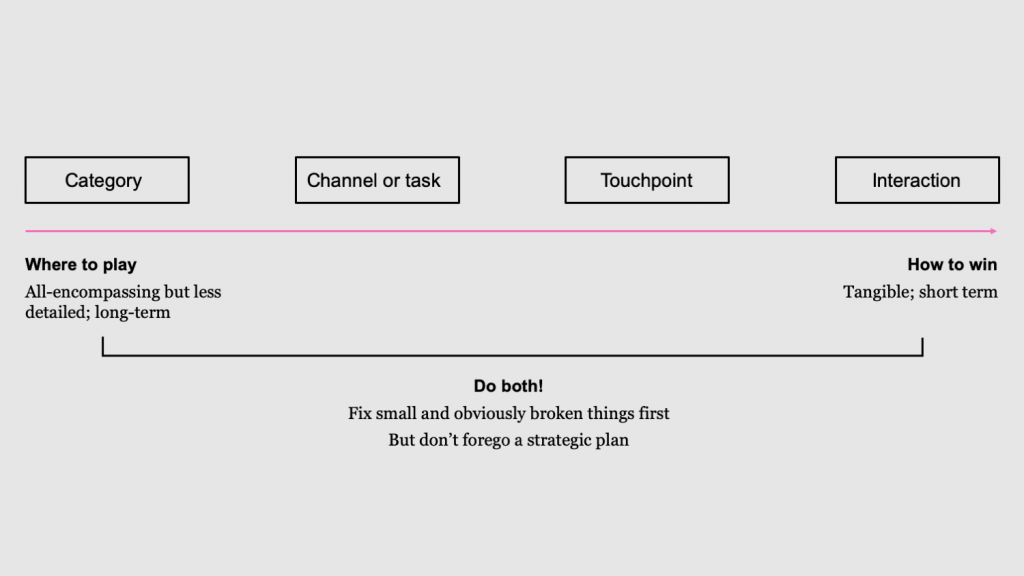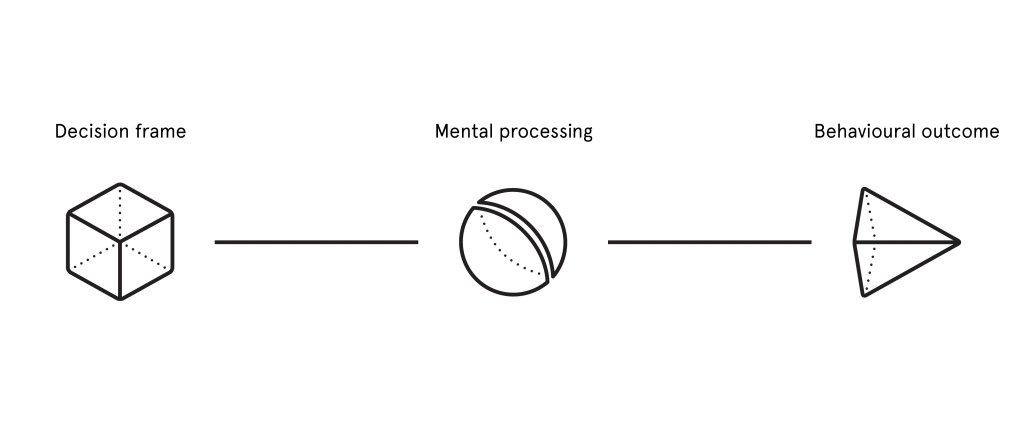Using behaviour change to activate consumer journeys
Success in business is defined by results, not by effort and endeavour. Similarly, a journey is a means, not an end. When thinking about journeys we need to focus on the destination: the specific behaviour we want consumers to engage in. For example, a business objective to ‘grow market share’ can be reframed as a behavioural objective to ‘get audience A to buy widget X by incentivising them to trial in-store.’
With this in mind, we use Behaviour Change principles to activate consumer journeys by translating business objectives into human behavioural objectives and then creating appropriate interventions.
Journeys are often too complex in reality to be defined by a single behaviour; we need to help consumers navigate a category by guiding their behaviours through a complex web of channels, touchpoints and interactions. Example behavioural objectives include buying something for the first time, visiting a new area of a store, engaging a salesperson, trialling a new feature.

In the workshop we talked about how different journey types are required to meet organisational needs. We need a high-level, strategic view of how consumers navigate a category, but we also need a detailed view of how they navigate the most influential aspects of it. As insights and marketing professionals, we need to understand which touchpoints have most impact on consumer behaviours and which touchpoints we can influence most effectively.
The devil is in the detail and we need to look at journeys forensically. For all journey types, strategic and tactical, we need to understand the biases that get in the way of decision-making in our favour and intervene at the right time, in the right place, in the right way to meet the needs of the target audience(s). We do this using our proprietary Behaviour Change model.

Category journeys
At the most strategic level, getting consumers to change what they do is the mother of all behavioural challenges. A host of deeply ingrained biases and heuristics need to be overcome: status quo, self-efficacy, affect, effort, self-efficacy and confirmation bias. Brand building is required to create subconscious awareness, desire and intent. Throughout the journey, brands need to be prescriptive at each touchpoint, nudging consumers along in desirable ways. Toward the end of a journey, where evaluation is more conscious and detail-focussed, brands need to match needs with lifestyle benefits to help consumers navigate choice.
Channel or task journeys
Tech titans such as Amazon, Uber and Spotify have built their success on obsessing over customer experience. They aim for frictionless experiences, meaning minimal steps to complete a task, intuitive interfaces and meaningful integrations. The same is true for consumer journeys. Brands and retailers should focus on minimising the physical and mental effort associated with navigating choices and completing tasks. Brands are at risk of losing consumers in a journey the moment they feel lost, confused, overwhelmed or disappointed.
Touchpoint journeys
It is easy for brand managers to assume that consumers see things the same way they do. They don’t. It’s called the blind-spot bias. The truth is that consumers have limited will, attention and cognitive capacity. Individual touchpoints – pre, during and post-purchase – need to work hard to make an impression (affect bias) and detail matters a lot (effort bias). From a journey perspective, it is important for teams across the business to create consistent brand experiences at touchpoints that are, ideally, distinct from competitors. Offline and online channel interactions, earned, owned and paid media messaging; these need to work in harmony, communicating consistent brand messages and product benefits. Seems straight-forward, but so often brands fall short.
Interaction journeys
Consumers value brands that treat them as individuals, respect their needs and empathise with them. They value experiences that reinforce their self-image and resonate with their personal values, leaving them feeling good about their decisions. To create consistent, smooth consumer journeys, every interaction needs to be considered, planned and designed to the point they feel effortless. Interactions that put the onus on the consumer, soaking up their time and energy, are quickly put off or replaced. Brands need to personalise journeys and show empathy, putting control back into consumers’ hands.



